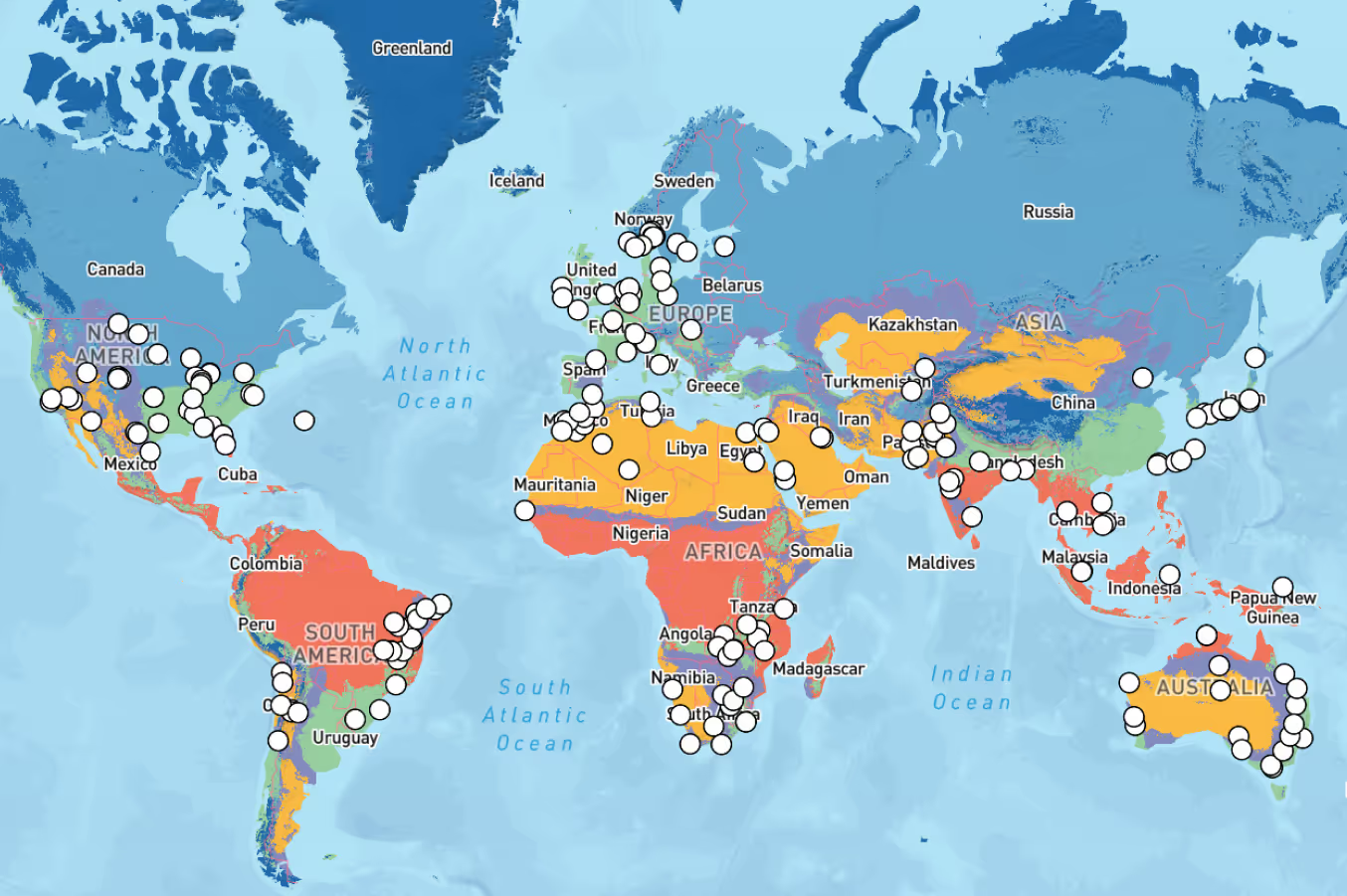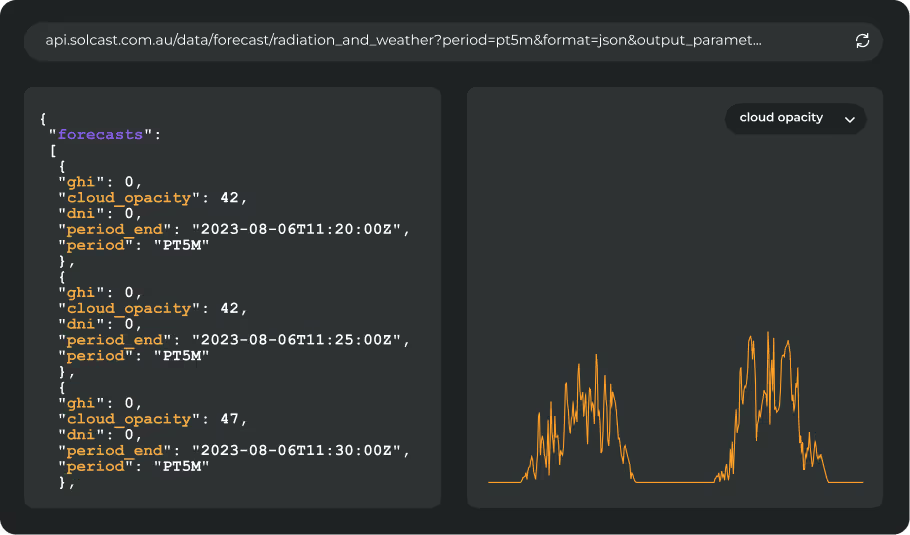Users working in the Solcast API Toolkit can now access data from the latest version of the Solcast API!
The new version of the API launched with programmatic access earlier this year bringing 30+ parameters (including GTI) and time granularity as fine as 5-minutely. So far, software developers and data scientists have been giving us very positive feedback about its accuracy.
But analysts and engineers, who tend to use manual downloads of CSV files from our API Toolkit, have had to wait while we catch up the Toolkit!
Interested in trying out the new data for yourself? Using the Toolkit, you can now query our new Live and Forecast data, for any location in the world. Not a paying Solcast customer yet? No problem, it's free to evaluate, and you can register now by heading to the toolkit registration page.
You can select your desired location, choose what data parameters you want, and instantly download the data as CSV or JSON. Software developers can copy the API call into their preferred development workflow.
What about Historical data?
Today, the new version of the API currently only covers Live and Forecast data (-7 to +14 days), however you can still access and freely evaluate our historical data in the API Toolkit, you'll just need to wait a few minutes for your request to be completed. Right now we're working on extending the synchronous (i.e. near instant) API back in time to include our historical data. When this is done, Solcast users will be able to use our historical data programmatically, and they won't have to wait minutes to get their data! If this is of interest to you, reach out to us now to learn more.
Below is a short video showing the new API Toolkit Landing Page in action:










.avif)


